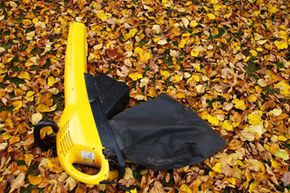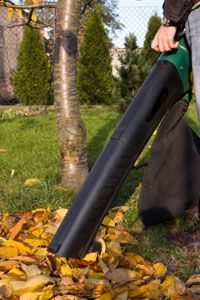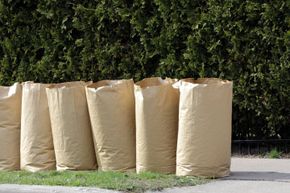After going a couple of weeks without cleaning your kitchen floors, you notice they've become rather filthy. Bits of food are clustered close to the stove, fur from your shedding dog has collected under your kitchen table, and dust bunnies have started to form in the corners. But not to worry -- you'll make quick work of it. Grabbing a blow dryer out of your hall closet, you switch it on and direct the airstream toward the assembled filth. It's a bit tricky, but with enough practice you'll be able to blow all the dirt into a nice, manageable pile that you can sweep into the trash.
Or you could just use a vacuum cleaner. Blowing dirt around your house would be a little ridiculous, wouldn't it? But for some reason, that line of thinking has rarely carried over to yard work. Homeowners may use suction to clean their living rooms, but outdoors they've had no problem chasing leaves into a pile, knowing full well that the slightest gust of wind could undo their afternoon of careful gathering.
Advertisement
Long a tool of professional landscaping companies, lawn and garden vacuums are slowly encroaching on leaf blowers as the yard cleanup tool of choice. Often resembling souped-up lawnmowers, lawn and garden vacuums are essentially larger, more rugged version of their indoor cousins. But where home vacuums will only be tackling dust, dirt and the occasional toenail, lawn and garden vacuums need to tangle with massive amounts of leaves and pine cones.
This means that lawn and garden vacuums are typically built more ruggedly, but the mechanics of both indoor and outdoor vacuums are about the same. At the center of the vacuum is a small compartment containing a high speed fan, which is connected to intake and exhaust hoses. As the fan spins, air is pushed out of the small compartment and into the exhaust fan. With the air pushed aside, a tiny, low-pressure area (known as a partial vacuum) is left behind in the compartment. Suction is created when air rushes in through the intake hose to fill this area, and leaves ride this jet of air just like a stream of water.
While push-mower varieties are the most common type of lawn and garden vacuum, they're also offered in small handheld versions, large rideable models, or as trailer attachments to small-scale tractors. Backpack models are good for cleaning up bits of waste around trees and gardens, while larger, heavy-duty models can handle larger areas and ensure better pickup of debris.
So, how do you operate a lawn and garden vacuum?
Advertisement





